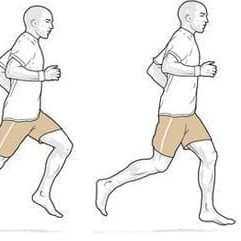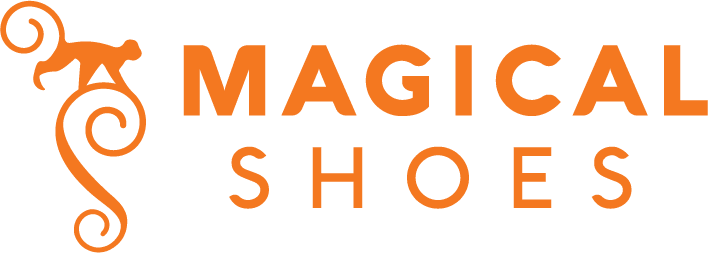
Natural running is a way for more joy of training and better knee protection. Nevertheless, it is worth starting with a head to avoid trouble. With a head, so for example like that …
NATURAL RUNNING – WHY?
About why natural running is something for us – ordinary, as well as those slightly better than average – runners, you could read in this article [link to the first text]. Listing the most important points raised there are:
- Running in barefoot shoes, you change the technique of running for safer (you give more protection to your knees).
- Running naturally significantly strengthens your feet, achilles tendons and calves, and improves your condition (this translates into results).
- Running naturally, you have better contact with the ground, which increases the pleasure of running and allows you to feel more “rooted” on the route. For example, when running the Explorer model you only have 5 millimeters of “magical” rubber under your foot!
- And the last – maybe not obvious, but still true – running naturally, you can significantly save on running shoes, because you do not have to worry about the fact that you need a new pair of shoes, because in the old “amortization has crumpled”. There is nothing to crumple in barefoot shoes.

Magical Shoes Explorer – there is nothing to crack here
NATURAL RUNNING – WHICH SHOES?
OK, I understand that there is no point in arguing with what is written above. Running naturally (minimalistically) is simply worth it. And if it is worth it, it is also worth having appropriate barefoot footwear for this, because in classic running shoes with a stiff sole and a large drop between the heel and toes, it is very difficult to run minimally, and sometimes it just can’t be done. Therefore, proper footwear for natural running should meet several basic conditions:
- Be flexible, both along and across and in the heel
- Have space for your toes(WIDE TOEBOX)
- Don’t have a drop(ZERO DROP)

Pancake test for barefoot running shoes
NATURAL RUNNING – GET STARTED WITH YOUR HEAD!
There is faith and there are shoes – what’s left is to go out on the path and conquer the world? No, not so fast! Most of us should start by reminding our legs what to do when running naturally. Of course, there are people who have not run at all, or from the beginning of their lives, until now, adhered to the technique that Mother Nature came up with, but these are exceptions among us. The most common way to natural running is through the most popular – “classic” running technique with landing on the heel and using the cushioning in the shoe, which something stops working. And then, because of pain and anger for further injuries, as well as the prices of subsequent shoe models, the runner begins to combine what to change in his style of running. And changing a running technique – like most major changes – requires … time and mindfulness to bring benefits, not harm.
First of all: the muscles of your feet will start working. Soreness and cramps in the feet? Yes it is possible!
Secondly: you will significantly strain your Achilles tendons (they will begin to stretch).
Thirdly: calves, calves will burn, will be hard and will increase in volume.
And that’s why you need two things: a transition period and adaptation exercises.
NATURALRUNNING – TRANSITION PERIOD
The transition period is primarily an exercise and a challenge for the head and mind. And, interestingly enough – the bigger the challenge – the more you ran before. Because … regardless of whether you did 30 kilometers, 50 or 100 a week … you’re back to zero. The past does not matter, the legs have to learn to run again (other body parts also), so you start as if it were the first training in your life and gradually increase the distance.
In the accounts of people who changed the running technique, the whole process usually takes 2 to 6 months, and therefore it is best to do it after the start season, when there is some space to let go. In the case of the author of this guide, it lasted four months – from the last marathon in very stiff shoes, to the first half in extremely minimalist shoes. Magical Shoes Explorer – 100% flexibility
Magical Shoes Explorer – 100% flexibility
Therefore, it is worth emphasizing again: regardless of your running history, here you are newcomers. And as newcomers, you must learn to master a new technique and give yourself time to strengthen the propulsion system.
Of course, you can help yourself with this – even walking barefoot as much as possible (at least around the house, but it is also possible around the estate), or lifting objects from the ground instead of your hands.
The general point is that you have to learn again that you have feet and give your feet the opportunity to work and strengthen yourself.
NATURAL RUNNING MAGICAL SHOES – BODY ADAPTATION AND TECHNOLOGY
The biggest change in the way you run will be an automatic shortening of your stride length during the run, and – which means – an increase in cadence (number of steps per minute) if you want to keep the same pace. Where does this change come from? Well, running naturally and without a drop is very difficult to “unnaturally” land on the heel (without depreciation it really starts to hurt). Therefore, the foot “wants to stand” in the most natural way for it, that is, touch the ground with its middle part (namely: the middle outer edge at the height of the “pillow” in front of the toes). To enable her, you have to put her more or less under the body’s center of gravity, that is, “under you” and not “in front of you”. It looks something like this:

Natural running: Doc Andrew Murray
Of course, while running, remember to keep your arms working along the body (and not across), and our posture was straight with a slight inclination forward, thanks to which we gain speed (the first figure shows it well).
The first runs, whether in barefoot shoes or minimalist, are best done not on grass or sand, but not on asphalt. We will be able to feel exactly how we set foot and get information (discomfort) if something goes wrong. At the beginning there is nothing to crazy about the range, 1 kilometer is enough to feel “new” in your legs. And what is important for people who are just thinking “I will run a kilometer in minimals, and then 15 in my old shoes” – this type of mixing techniques weakens adaptation and, in total, extends the time of switching to natural running. That’s why I advise against. Either this or that.
Because we don’t hit the ground with the heel, the impact force is distributed differently when landing. What would slip into foam in the cushioned shoes and then hit the knee joint, this time the short soles of the foot are collected and stored by the muscles, then the plantar aponeurosis (you do not have to be very careful about it) and finally the calf muscle. Knees gain, but feet and calves …, feet and calves need to be strengthened so that muscle overload and tendons are not overstretched, which lost their flexibility during years of walking and running in classic shoes.
Exercises to strengthen them include, for example:
- Walking without shoes (as much as possible)
- Clamps on toes – calves work. At first both feet, with time standing on one leg. It’s worth putting something under your tos to increase your range of motion.
 Minimalist shoes – strengthening the feet and calves
Minimalist shoes – strengthening the feet and calves
- Rolling the ball under the foot – strengthens the foot and massages the plantar fascia
- Rolling the toe of the towel with your toes – strengthens the foot and fascia (aponeurosis)
- Squats on one leg – strengthening the entire leg, ankles and learning to balance
- Stretching the fascia by holding the “opposite hand” by the bases of the toes of the foot and bending the toes back
- Stretching the calf muscles by standing on the whole foot at a distance of outstretched arms from the wall and gradually pulling the hips closer to the wall (with a straight leg knee at the back). If you do not feel “pulling” in the calf, you can put something under the toes of the foot, which will force you to stretch the muscle more.

Minimalist shoes – calf stretching
NATURAL RUNNING – TRANSITION THREATS
The two main threats are too much and too fast, and I don’t feel like it, it’s been going on too long. While the effect of the second is obvious and leads to giving up changing and returning to running in cushioned shoes, the risk of overtraining is often underestimated, and this is a big mistake. Pushing the aponeurosis can lead to a very painful and difficult to treat inflammation of the fascia, overloading the calf muscles, even breaking off their attachments. That is why it is so important during the transition period to regenerate, strengthen the elasticity of the tendons and strength of the muscles of the feet and calves, and gradually increase the ranges, as well as to refrain from adding more difficult elements of training – such as uphill runs – during which the Achilles tendon and plantar fascia will be exposed to high tensile forces.



 Minimalist shoes – strengthening the feet and calves
Minimalist shoes – strengthening the feet and calves
Leave a Reply